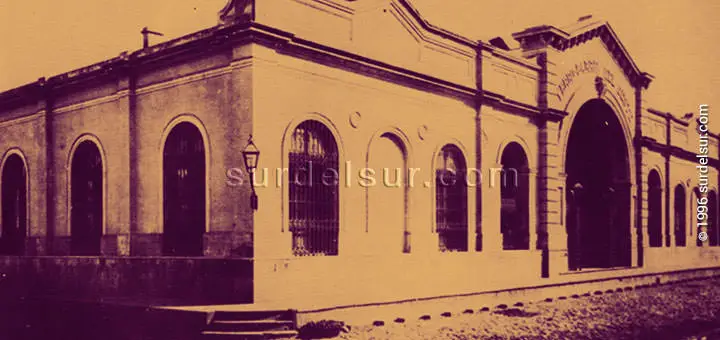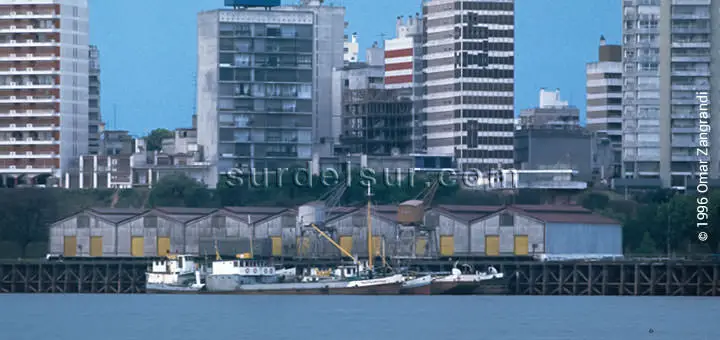In 1990 transportation and communications in Argentina, representing 5% of GDP, arriving in 2017 to 9,8%. The transport capacity of a country is linked to its economic potential. Not enough to have a good production. Economic development implies to transport products in and outside the territory, in a short time and at low cost.
According to a report from the Rosario Stock Exchange (2018), it is estimated that the cargo transport market in Argentina could amount to 450 million tons per year. This figure arises from the sum of the loads by truck, rail, air and fluvial by the Paraná-Paraguay Waterway.
If we analyze the participation of each sector, it is observed that 91% of the total, is transported by truck. The railroad would be responsible for 4.2% of transport, while 4.8% is transported by the Paraná Waterway. On the other hand, less than 0.1% corresponds to air transport.
Evolution of Transportation and Communications in Argentina
The railway network in our country was closely linked to economic development.
The first railway line was opened in 1857, in Buenos Aires. Joined the Park, currently Plaza Lavalle with Floresta, along 10 kilometers.
It was built by a group of locals traders grouped in the Sociedad Camino de Fierro de Buenos Aires al Oeste. (Company Iron Road from Buenos Aires to West)In the first year the train driven by the legendary locomotive La Porteña transported 186,000 passengers.
Development of railway network
The development of the rail network was due at first Argentine capital. Soon they were joined, mostly British capital. In 1930, of 38122 km length of the railway, only 24% were state capitals. At the end of the Second World War the rail network had approximately 43,000 km and was the tenth in the world.
Railroads were under British control until the 1940s. Between 1946 and 1948 were nationalized and remained under the jurisdiction of the State: Empresa de Ferrocarriles del Estado Argentino (EFEA, then Ferrocarriles Argentinos)
In the 1990s, during the government of Argentine President Carlos Menem, by way of a privatizing process, they came to belong to private companies.
Following the privatization, the Argentine long distance railway system, is completely dismantled. No control of privatized companies is performed, which leads to disinvestment deficit and subsidies.
The deterioration of the railway network was complete, including the metropolitan lines, which reduced the quality of services, maintenance and security.
In 2008 by the National Law 26,352 rail activity in Argentina it was reorganized by creating two state companies: the Railway Infrastructure Management and Railway Operator. Currently the state owns the rail network and exercises the administration of the railways.
Perspective Argentine railways
Currently the transportation of cargo by rail, has a 5% stake in the current matrix of cargo transportation of Argentina. With a clear preponderance of road transport mode.
While the national rail network still retains most of its length, it is evident the deterioration and lack of investment in infrastructure, especially in the northern provinces.
Globally, countries with similar territorial extensions to Argentina, including Brazil, the United States and Canada use the railway. Which plays a key role in its transport matrices.
It is estimated that freight costs of products, be reduced by 40% if used for transfer, an efficient railway system. In general terms it could confirm that the rail transport is the mode that best contributes to the economy of freight costs, and quality of life. Produce less pollution and noise, less accidents, release routes congestion resulting from heavy traffic, and can use renewable energy.
Overland Transport
The highways of Argentina is divided into national highways, provincial roads, and community or municipal routes.
National highways connect the major centers of production, with consumption centers and national ports. The ports are the main way of entry and exit of goods from the country.
Products corresponding to (primary and industrialized) agriculture are mobilized essentially by means of automotive transportation. Its use is less efficient from the economic point of view, poses problems of congestion at busy stretches of the road network especially at harvest time, and is more polluting than the use of rail transport.
River and sea transport
Main commercial ports are: Buenos Aires, Bahia Blanca, Quequén, Rosario and Paraná. More than 90% of Argentina’s foreign trade is carried by sea. But Argentine ports have some disadvantages: high fees, shallow and limited infrastructure.
The Paraguay-Parana waterway demand the creation of a deepwater port, since this traffic is directly related to the Mercosur to enhance river communications with the rest of the bordering countries.
Air transport
Air routes also converge towards Buenos Aires. The major international airport Ministro Pistarini International Airport known as Ezeiza International Airport , is located 29 km from Capital Federal. The two major airlines are Aerolineas Argentinas and LAN.
In 1992 there carried on domestic flights, 25,000 tons of cargo, a figure that drops to 10,000 tons in 2011. (INDEC). While in the same period the Gross Domestic Product (GDP) grew and increased the establishment of companies within the country.
In recent decades, the participation of national flag airlines in international cargo volume has tended to decline. It went from 20% in 1993 to 14% in 2015. (SSPMicro based on INDEC
Air cargo transported by regular service in Argentina in 2017 was 195 thousand tons, 17% more than in the previous year, marking a change in trend after 3 consecutive years of decline. 96% of the movement corresponds to international transport. (INDEC, 2017)
Of the 55 airports that made up the National System (SNA) in 2017, only 33 recorded some type of movement of air cargo. However, it is the Ezeiza Airport that concentrates a 91.7% share. (SSP Micro based on ONDAT and ORSNA)
Satellite Communications
In 1988 Argentina started satellite transmission available through Intelsat VF13. Since 1 June 1993, it began to have an Argentine satellite telecommunications system, telephony, television and radio.
The October 16, 2014, was successful launch ARSAT-1. Mounted on a French Ariane 5 booster rocket, launched from French Guiana.
The ARSAT-1 is the first, fully assembled geostationary satellite in the country; and is the first communications satellite in Latin America.
The satellite was designed to provide television services, telephony, data transmission and Internet services to Argentina, Antarctica, Uruguay, Chile and Paraguay.
This is an abridged version of the report on economic activities.
The full version is available only in Spanish: Transporte y comunicaciones en Argentina >>
References:
All graphic material in this report is edited digitally. The customized version by surdelsur.com shown on this page is performed based on the following documents:
- Archivo de la Nación: [Ancient Photographs] Collection of photographic material on Argentina Economic Activities (1995), Buenos Aires, Argentina
Bibliografía
- Scalabrini Ortiz, Raúl (1940) Historia de los ferrocarriles argentinos
- UTN. Facultad Regional de Haedo. Breve Historia de los Ferrocarriles Argentinos, su Construcción, su Destrucción, su Importancia, y Proyecto de Recuperación
- Potenze, Pablo Luciano Estado y desarrollo del transporte aéreo en la Argentina.
- Ministerio de Transporte Gestion del Sistema de Transporte en Argentina


















![Agriculture in Argentina: Crops, Productive Areas [2024] 17 Agriculture in Argentina: Crops, Productive areas](https://surdelsur.com/en/wp-content/uploads/sites/3/2015/03/agricultura-en-argentina-panorama-150x150.jpg)



